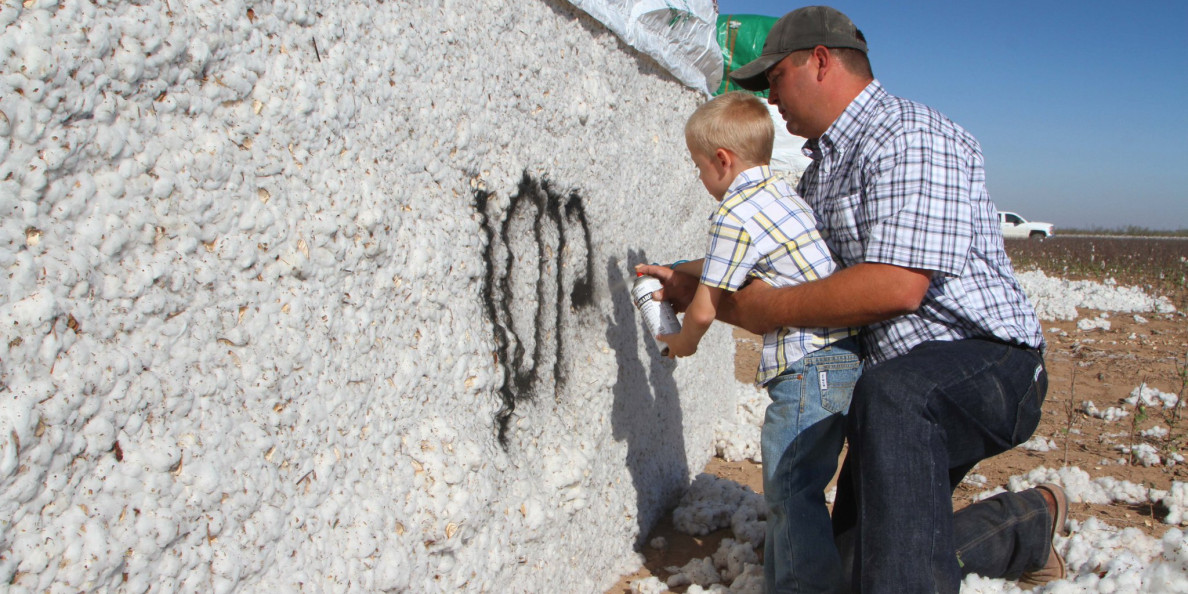Many contradictions muddy the outlook forU.S. cotton markets.
John Robinson 1
The picture for U.S. cotton supply, demand, and price reflects a bit of a contradiction.
For 12 months, the USDA has projected a large year-over-year addition to U.S. ending stocks for the current marketing year. This implies that the long run fundamental outlook is at risk of price weakness — which is the normal interpretation of increasing ending stocks. This interpretation got a lot of attention in the press during 2017.
One set of folks who were likely paying attention to this situation were foreign mill buyers of U.S. cotton. The pattern of their buying can change according to the market outlook.
For example, when the market appears to be aimlessly gyrating up and down, mill buyers will often buy cotton in a hand-to-mouth pattern that waits for the next price dip to buy some cotton for immediate delivery. But when the long-term price outlook is bearish, they will buy more cotton on-call, where they fix a favorable basis for a future delivery and the price is eventually fixed against the futures market at a later date — and, presumably, at a lower, level.
HEDGE FUND BUYING
In 2017, foreign mills bought quite a lot of U.S. cotton on-call, for settlement against the March, May, and July 2018 futures contracts. This is evidenced by a seasonally high pace of U.S. exports (reported weekly by the USDA). It is also reflected by record levels of unfixed on-call sales of cotton (reported weekly by the U.S. Commodity Futures Trading Commission).
But a funny thing happened on the way to a bearish market outcome. The strong pace of U.S. exports was apparently noticed by hedge funds, which may have interpreted it as one of a number of unfolding bullish stories (e.g., expanding demand for cotton, shrinking demand for polyester, shrinking supply of foreign cotton).
One thing for sure: Since mid-November, hedge funds built up a historically large net long position — that is, they were betting on higher cotton futures prices. And what may keep them in this position for a few months is the apparent corner that the mills have painted themselves into.
BURSTS OF UPWARD VOLATILITY
The unfixed on-call data from the CFTC suggest that roughly 10 cotton futures contracts will be bought for every one sold, as mills finalize their on-call contracts and hedges on those bales are bought back.
That raises the possibility of perhaps brief bursts of upward volatility at some predictable times of the year, such as late February, late April, and late June.
When that is past, it will still likely leave us with a fundamentally bearish long-run picture of increasing ending stocks. A large amount of carry-in, plus an average crop in 2018, would perpetuate large stocks for the 2018/19 marketing year. Such a scenario would likely pressure new crop futures in the second half of 2018.
There are a lot of questions remaining. Does the seasonally high pace of U.S. exports reflect expanded demand, or just front-loading of normal demand? Will a downshift in Indian production result in a significant increase in U.S. exports? Will an improving economy and problems with polyester give a boost to cotton consumption? Will a La Niña weather market keep the hedge funds buying cotton futures?
And will any of these factors change the bottom line of a potentially heavy balance sheet for U.S. cotton supply and demand?
Πηγή: Southwest Farmpress


